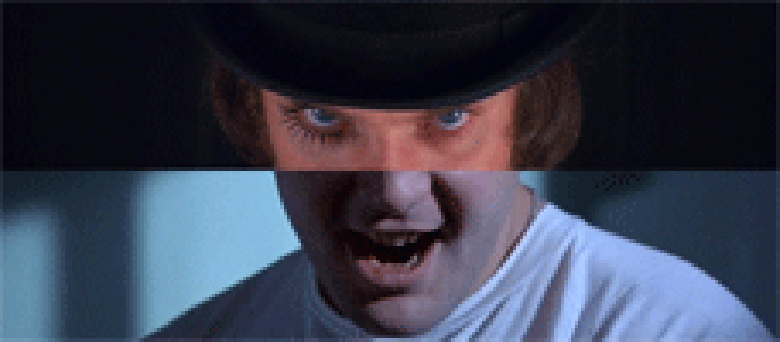Credits
Feature by: Rumsey Taylor, Cullen Gallagher, Katherine Follett, Leo Goldsmith, David Carter, Evan Kindley, Ian Johnston, Timothy Sun, Jenny Jediny, and Adam Balz
Posted on: 08 November 2012
Stanley Kubrick is, for many, the consummate auteur. Over a decade after his death, he seems to hold an unshakably central place in international cinema’s history and geography: a Bronx-bred and London-based filmmaker with Hollywood patronage and an explicitly international scope; a fiercely independent and spotlight-averse filmmaker whose ambition, show-biz cunning, and technical and formal innovation took him to the heights of big-budget, major-studio filmmaking. He is, as James Naremore identifies him, “the last modernist” filmmaker, but also among the first of a new breed—producer, director, and businessman, all in one. Squeezed in between the generations of the great Hollywood auteurs of the 1940s and 50s (Hawks, Hitchcock, Ford) and the film-school mavericks of the 1970s (Coppola, Scorsese, De Palma), Kubrick had few major contemporaries from America—he has far more in common with those working Europe (Fellini and Bergman), though he’s seldom lumped with them. Kubrick continues to influence – and often intimidate – contemporary filmmakers, a fact made still more astonishing by the fact that his small universe of readily identifiable themes and formal quirks fits into an oeuvre of only slightly more than a dozen films.
Kubrick’s is a body of work that takes us from the dawn of man to beyond the infinite in a single film, that treats the Manhattan nightworld, the Colorado Rockies, and the War Room with equal gravitas, and probes the ambiguities of power and human will with equal irreverence. He made the definitive haunted house movie, three of the most embittered anti-war films ever made, and what is widely reputed to be the greatest science fiction film of all time. Those films considered his best are paragons of cinema’s technical and narrative possibilities; those considered his worst are no less fascinating for their formal daring and inscrutable intentions always ripe for reevaluation and critical advocacy; and even those he never got around to making are the subject of intense speculation and scrutiny (and $1,000 coffee table books).
A brand unto himself, Kubrick boasts a legacy that is inextricable from the inadvertent personal mystique he built around himself as an intellectual polymath, an exacting perfectionist, and a recluse. And it is this enduring enigma that often dwarfs the man. Kubrick permanently relocated to England in 1968, coinciding with the filming of 2001: A Space Odyssey, and while all of his films bear the indelible Kubrick trademark, there is a distinct connection between the director’s output after 2001 and an increasingly eccentric lifestyle. There are logical explanations: in a 1980 interview Kubrick succinctly summed up his move to the U.K. in terms of pragmatism, dismissing the notion of self-exile in less than three sentences:
If you’re going to make films in English, there are three places which are centers of production, Los Angeles, New York, and London, and since I spend so much time in the preparations and the cutting of a film, I have to live in one of those production centers, otherwise I’ve never be home, I’d always be away. New York is not as well equipped as London, and Hollywood is slightly better equipped, but given the choice to live between Hollywood and London, I just like London much more, it’s a more interesting city, and I like living here. 1
Yet the Kubrick myth persists, and not merely out of fan interest. Since his death a little over a decade ago, subsequent, and still-fascinating evidence of the director’s obsessiveness has been released to the public. The recent British documentary Stanley Kubrick’s Boxes discloses a mind-bending amount of printed matter – research, photographs, even fan letters – hoarded and carefully catalogued by the director on his estate.
As daunting as delving into Kubrick’s personal research files would be, contending with his filmography is a far more onerous task for any critic. His films are paradoxically both rigorous and populist: blockbuster art films and formally idiosyncratic costume epics that have inspired cultish admiration and are regularly recycled for the clip-reels at Academy Awards ceremony. (This despite the fact that Kubrick received only one such award, for special effects supervision on 2001.) The Star Child, Slim Pickens’ exultant atomic death-ride, Jack Nicholson’s axe-wielding nursery rhyming: these are film moments as recognizable as any by Hitchcock, Ford, or Spielberg. And yet Kubrick’s films are demanding, too – or perhaps “stately” is the word – often exceeding two hours in duration, with pacing, acting, and editing that is by turns terse, spacious, and weighty. Indeed, from at least Barry Lyndon onwards, all of his later films were greeted with very mixed critical reactions upon first release, even if all have been, to greater or lesser degree, canonized as masterpieces in later years.
Kubrick’s rigor, formal consistency, and well-cultivated mystique has ensured the critical treatment of his work as something that is itself monolithic; in some ways, this view of Kubrick as an auteurist’s sacred cow, whose perfectionist vision merely requires some time to sink in, has hamstrung critical appraisal of his work. In this feature, our aim is not to once again dance around this monolith like so many awestruck apes, but to pry it open slightly, the better to discern its contours and occasional fractures. Over the next two weeks, we’ll be looking at each of Kubrick’s films – from his early documentaries to his majestic late works, and beyond – in an effort to not only to reinforce the internal coherence of his oeuvre as a whole, but also see past the looming shadow of Stanley by examining each film as its own distinct entity.
Introduction by Leo Goldsmith and Jenny Jediny
- Vicente Molina Foix. “An Interview With Stanley Kubrick.” (1980) The Stanley Kubrick Archives. Alison Castle, Editor. Taschen, April 2005. ↩
By Rumsey Taylor, Cullen Gallagher, Katherine Follett, Leo Goldsmith, David Carter, Evan Kindley, Ian Johnston, Timothy Sun, Jenny Jediny, and Adam Balz ©2012 NotComing.com
Reviews
-
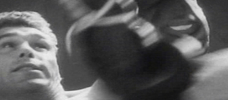
Stanley Kubrick’s Early Documentaries
1951-53 -

Fear and Desire
1953 -

Killer’s Kiss
1955 -
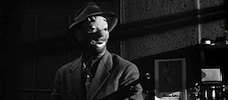
The Killing
1956 -

Paths of Glory
1957 -
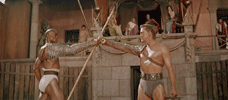
Spartacus
1960 -

Lolita
1962 -
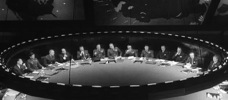
Dr. Strangelove or: How I Learned to Stop Worrying and Love the Bomb
1964 -

2001: A Space Odyssey
1968 -

A Clockwork Orange
1971 -

Barry Lyndon
1975 -
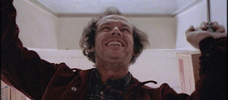
The Shining
1980 -

Full Metal Jacket
1987 -
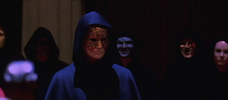
Eyes Wide Shut
1999 -

A.I.
2001
We don’t do comments anymore, but you may contact us here or find us on Twitter or Facebook.



